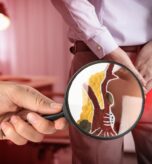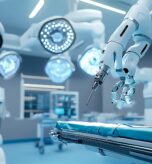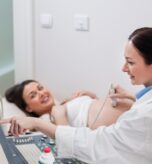
The gallbladder is a small, pear-shaped organ located under the liver, playing a crucial role in the digestion of fats. When problems arise, they can lead to significant discomfort and complications if not properly managed. This blog explores common gallbladder issues, their symptoms, diagnosis, and treatment options.
Symptoms of Gallbladder Problems
Gallbladder problems often manifest through a variety of symptoms. Recognizing these signs early can help prevent complications.
1. Abdominal Pain
Pain in the upper right abdomen is the most common symptom. It may radiate to the back or shoulder blade. The pain is often sharp and may worsen after eating fatty foods.
2. Nausea and Vomiting
Gallbladder issues frequently cause nausea and vomiting, especially during flare-ups of gallstone attacks.
3. Bloating and Indigestion
Patients may experience bloating, gas, or a feeling of fullness after eating. Indigestion is also a common complaint.
4. Fever and Chills
Fever and chills may indicate a gallbladder infection (cholecystitis) and should be addressed immediately.
5. Jaundice
Yellowing of the skin or eyes can occur if a gallstone blocks the bile ducts, leading to bile accumulation in the bloodstream.
Common Gallbladder Conditions
Understanding different gallbladder conditions can help in timely diagnosis and treatment.
1. Gallstones (Cholelithiasis)
Gallstones are hardened deposits of bile that can block the gallbladder or bile ducts, leading to pain and inflammation.
2. Cholecystitis
This is the inflammation of the gallbladder, often caused by gallstones. It may be acute or chronic.
3. Biliary Colic
Biliary colic refers to the pain that occurs when a gallstone temporarily blocks the bile duct, usually after eating a fatty meal.
4. Gallbladder Polyps
These are growths on the gallbladder’s lining. Most polyps are benign, but larger ones may require removal.
5. Gallbladder Cancer
Although rare, gallbladder cancer can develop and may be difficult to diagnose in its early stages.
Diagnosis of Gallbladder Problems
Accurate diagnosis is essential for effective treatment. Several diagnostic tests are available.
1. Ultrasound
Ultrasound is the most common imaging test for detecting gallstones and evaluating gallbladder inflammation.
2. CT Scan
A CT scan provides detailed images of the gallbladder and surrounding structures, helping to identify complications.
3. HIDA Scan (Cholescintigraphy)
This nuclear medicine test assesses gallbladder function and checks for blockages in the bile ducts.
4. Blood Tests
Blood tests can detect signs of infection, inflammation, or bile duct blockage. Elevated liver enzymes and bilirubin levels may indicate gallbladder problems.
5. Endoscopic Retrograde Cholangiopancreatography (ERCP)
ERCP is used to diagnose and treat bile duct blockages. It involves inserting a thin tube through the mouth into the digestive system.
Treatment Options for Gallbladder Problems
The treatment of gallbladder problems depends on the severity of the condition and the underlying cause.
1. Lifestyle Changes
Mild gallbladder issues can sometimes be managed with dietary changes, such as:
- Avoiding high-fat and greasy foods.
- Eating smaller, more frequent meals.
- Staying hydrated and maintaining a healthy weight.
2. Medications
In some cases, medications may be prescribed to dissolve gallstones or manage symptoms. However, this is not always effective for larger stones.
3. Gallbladder Surgery (Cholecystectomy)
Surgical removal of the gallbladder is the most common treatment for gallstones and chronic cholecystitis. There are two main types:
- Laparoscopic Cholecystectomy: A minimally invasive procedure with small incisions and faster recovery.
- Open Cholecystectomy: Performed through a larger incision, typically used for more complicated cases.
4. Endoscopic Procedures
If gallstones are lodged in the bile duct, ERCP can be used to remove them without the need for major surgery.
5. Antibiotics
Antibiotics are prescribed if there is an infection, such as in cases of acute cholecystitis.
Recovery and Post-Treatment Care
Proper care after treatment or surgery ensures a smooth recovery.
1. Rest and Activity
Take sufficient rest in the initial days after surgery, and gradually increase activity as advised by your doctor.
2. Diet Management
Stick to a low-fat, easily digestible diet to prevent digestive discomfort. Gradually reintroduce solid foods as tolerated.
3. Monitor for Complications
Watch for signs of complications, such as persistent pain, fever, or changes in bowel habits. Contact your healthcare provider if any concerning symptoms arise.
4. Follow-Up Appointments
Attend all follow-up visits to ensure proper healing and recovery.
When to Seek Immediate Medical Attention
Certain symptoms warrant urgent medical care:
- Severe or persistent abdominal pain.
- High fever or chills.
- Jaundice or dark urine.
- Vomiting that doesn’t subside.
These may indicate complications that require immediate intervention.
Conclusion
Gallbladder problems can significantly impact your quality of life, but with timely diagnosis and proper treatment, you can achieve relief and recovery. At Smart Clinics, our team of experienced specialists provides comprehensive care for gallbladder conditions.
For more information or to schedule an appointment, visit Smart Clinics or find us on Google Maps. Prioritize your digestive health today!





